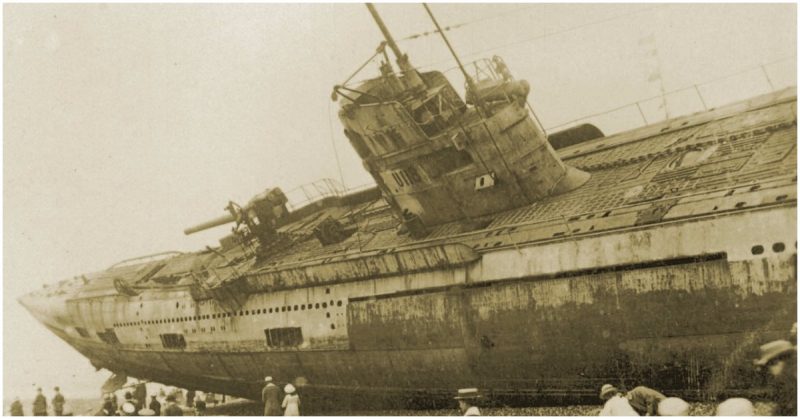The Navy Cross is awarded for valor and heroism while in service with the United States Naval Forces. Since its creation in 1919, there have been over 6,900 recipients to date. On this list of honor, however, only 55 of these recipients have been in the Unites States Coast Guard. 18 of these were awarded for a single action. In September 1918 men from the USS (Formerly USCGC) Seneca risked their lives to save the steamer, Wellington.
United States Revenue Cutter Seneca was first launched in 1908. She was a derelict destroyer. At the time, derelict ships and wrecks were a constant hazard to navigation. The United States was the first nation to produce specialized ships for their removal or destruction. Over her first nine years of service, she patrolled the coast for wrecks. She assisted in rescue operations. She was even a part of the International Ice Patrol, which reported or removed icebergs that drifted into shipping lanes. But when the United States declared war on Germany on 6th April 1917, she was transferred to the Navy.
This opened a new chapter in her career. She was now tasked with protecting convoys in a dangerous war zone. Germany had begun to openly use unrestricted submarine warfare, turning every inch of the Atlantic ocean into a battlefield. Convoys that brought troops, supplies or food to the embattled European Allies were targeted by U-Boats, that silently stalked just below the surface.
By September 1918, Seneca had already completed 25 convoys. Her crew were well seasoned, salty and trusted both their officers and their ship. They had also conducted numerous rescue operations, saving sailors from both the sea and sunken German submarines. These skills would serve them well on their fateful 26th convoy.
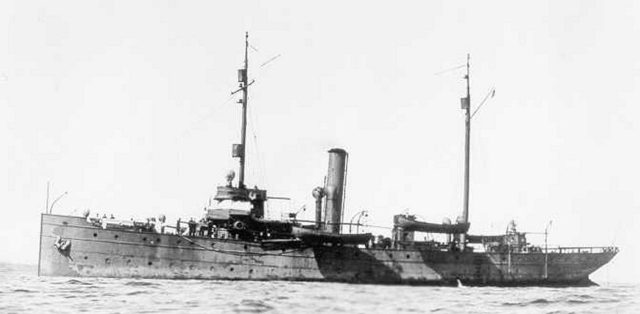
Convoy OM-99 (outbound from Milford Haven) set out towards Gibraltar on September 16th, 1918. It was routine, the 21 ships steaming steadily, with Seneca keeping an eye on her charges from a safe distance. The crew were continually scanning the surface for a periscope or the tell-tale wake of a torpedo. Although almost every sailor there had done this time and again, nerves were high. They knew that every moment they spent in the open water was another chance for a German to find their position and attack.
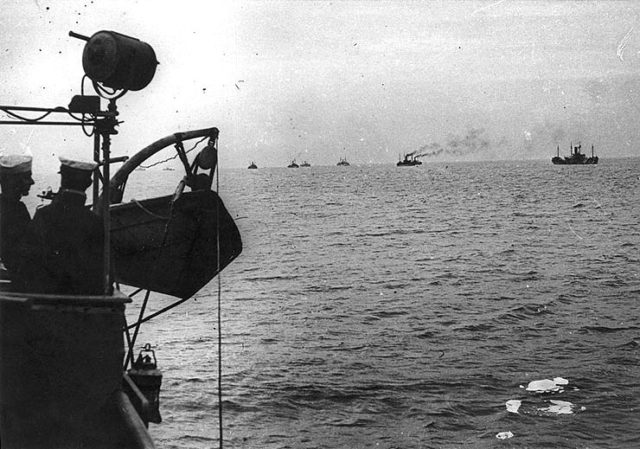
Suddenly their tense silence was broken as a massive explosion rocked the SS Wellington, an English steamer carrying much-needed coal. At 11.30 on September 16th, Seneca set engines full ahead and sped her way through the Atlantic water towards the injured ship. The crew spotted the telltale sign of a submarine and opened up with Seneca’s 3”/50 cannons, lobbing shell after shell at this hidden attacker. As the cutter released a string of depth charges, the sub dove down deep, hiding well below the surface until the convoy had passed.
Even as the threat disappeared, Seneca’s work was just beginning. Coast Guardsmen, even while in Naval service, are lifesavers. Now that the immediate danger was gone, they had to save the distressed seamen onboard Wellington.
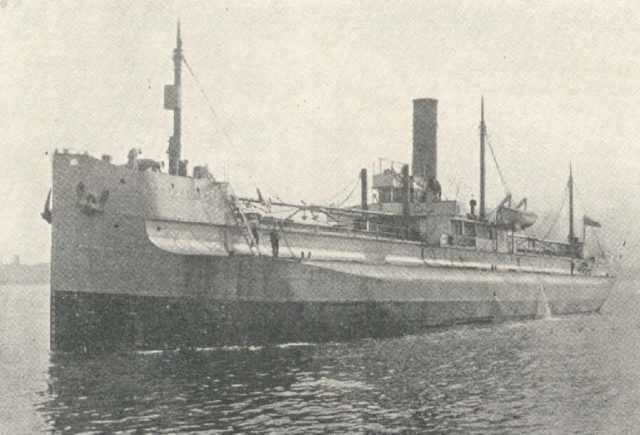
Pulling alongside Wellington, Seneca’s officers assessed the situation. The Wellington’s Master felt his ship could be saved. She was taking on water, but with plugging, patching, and a lot of bravery she could be kept afloat. Unfortunately, his crew disagreed, and many of them left the ship, fleeing to others in the convoy, or to the Seneca.
On board Seneca 1st Lieutenant, Fletcher W. Brown wanted to give the wounded ship a fighting chance and requested his Captain’s permission to organize a boarding party. The Captain agreed. Nearly every member of the Seneca’s crew volunteered to go, but only 19 were selected. They set out in small boats to rescue the stricken ship.
Joining the 11 remaining Wellington crew members, and her Master, the Seneca’s men arrived on board. They immediately set to work. The Wellington’s Master would take charge of navigation and bringing the ship to the nearest port, Brest, on the French coast. Lieutenant Brown handled the rescue and defense of the ship. The Seneca pulled away, at 12.35 to rejoin the convoy, leaving the Wellington alone in sub-infested waters. USS Warrington was dispatched to assist the lone vessel, but was hours away. For the time being Lieutenant Brown had to organize gun crews, dispense ammunition, and keep a sharp lookout for submarines all while ensuring that the pumps and hole patching continued.
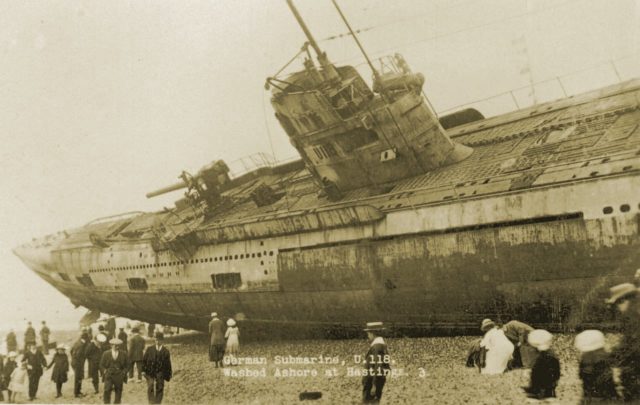
By 12.50 the Wellington began creeping forward again, her engines struggling. Her hold had over 3 feet of water on its deck. Over the next hour they increased their speed to 7.5 knots, a little over 8.5 miles per hour. This progress was remarkable considering the ship’s state. The atmosphere onboard must have buzzed with tension. They were alone, moving slowly, in sub-infested waters. The U-Boat which inflicted the first damage could very well be just below the surface, waiting for its chance to strike again.
Brown knew their situation, at best, was dangerous. He ordered the men to construct lifeboats, in case they should begin to sink. They kept moving forward, but as the day darkened, so too did the weather. The seas grew unsteady; waves came up from the depths in ever increasing size. The ship began to roll, plunging her bow into each oncoming torrent of water. Each time the bow came down, it forced more and more water into her hold.
Brown acted quickly. He attempted to turn the ship and head to France stern first, to prevent any further water from getting onboard. But it was too late. The bow had already become too cumbersome to maneuver, and the ship wouldn’t turn. Brown then ordered all crew to the main deck, except the radio operator and three men on the pumps.
Brown instructed them to begin loading the lifeboat. He and the four remaining men on board would stay until the very last moment. The evacuation went smoothly at first. They began loading into the lifeboat, but one of the Wellington crewmen lost his nerve. He was worried about the boat being smashed against the side of the ship in high seas. He cut the line connecting the two ships and sent himself, and seven other men, adrift in the small lifeboat. They attempted to row back to the steamer but they were not used to rowing, especially not in such conditions. They were forced away by the high seas and strong wind.
Brown was now left on board a sinking ship, with no lifeboats, and 23 men who needed saving. He ordered that they finish constructing the jury-rigged lifeboats which they had started earlier that day.
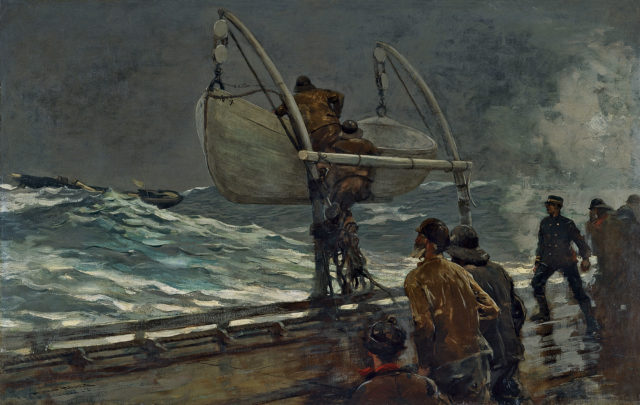
Throughout the entire episode the radio operator had been in contact with USS Warrington, which was steaming to their aid. They couldn’t wait any longer; the Wellington began to list, and Brown knew it was now or never. Brown fired flare rockets, in a last ditch attempt to alert the Warrington to their position. As the men were rushing into their hastily made lifeboats, a flare was seen in response! The Warrington was headed towards them.
Brown jumped in the water, searching for anything floating to grab onto. He swam about, ensuring that his men were alive, uninjured, and able to stay afloat. They awaited rescue in the freezing Atlantic water. The Wellington eventually went under, after listing heavily and her boilers exploding. Finally, the Warrington arrived and pulled what men they could find from the ocean.
In all 11 members of Seneca’s boarding party perished, along with 5 members of Wellington’s crew. For their bravery, sacrifice, and dedication to the safety of others, the boarding party members were all awarded the Navy Cross. Acting Machinist William L. Boyce received the Navy Distinguished Service Medal for staying in the engine room until the very end, ensuring that the crew had time to get off the sinking ship.
The attempted Wellington rescue stands as a testament, not only to the Coast Guard’s constant dedication to saving ships in distress but as an example of the comradery of all sailors, who worked to save both their ship and each other.
